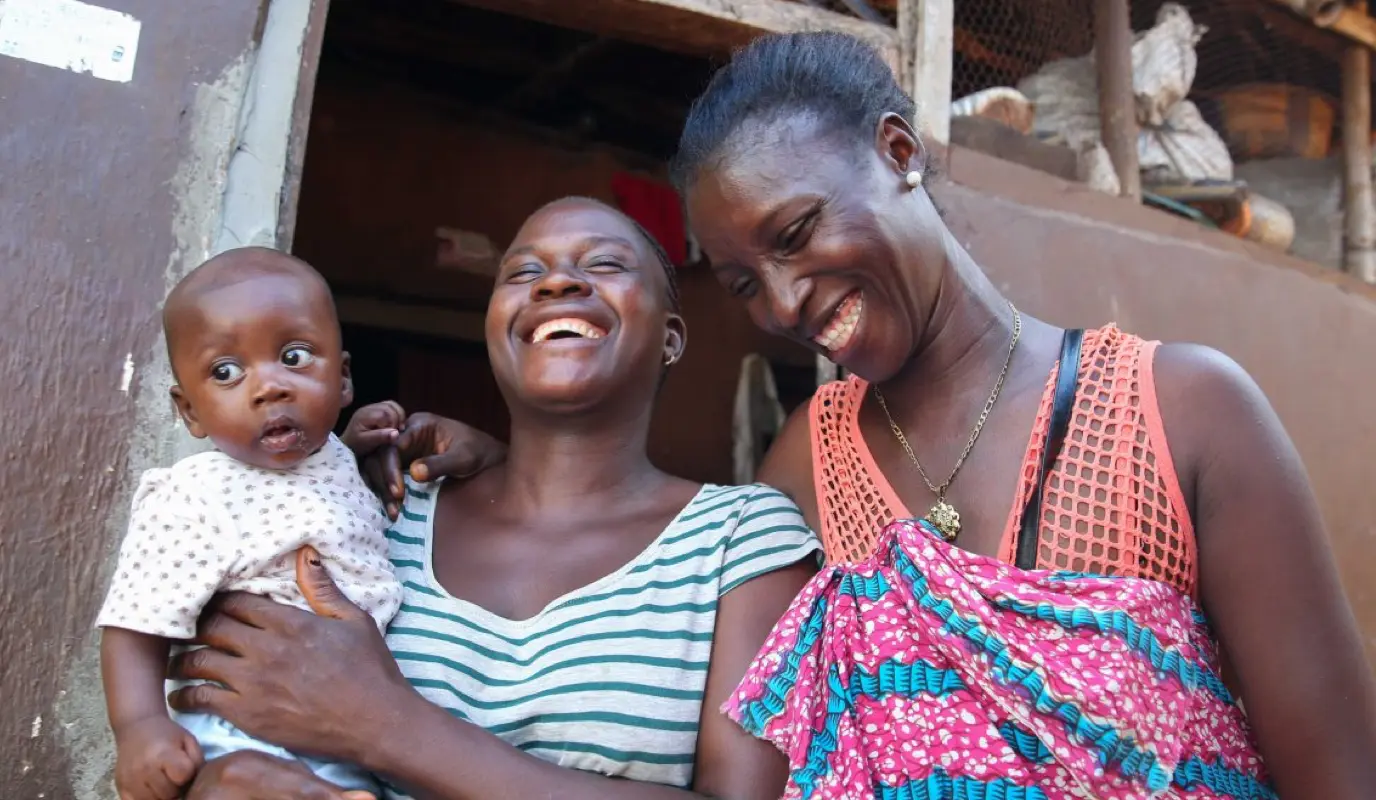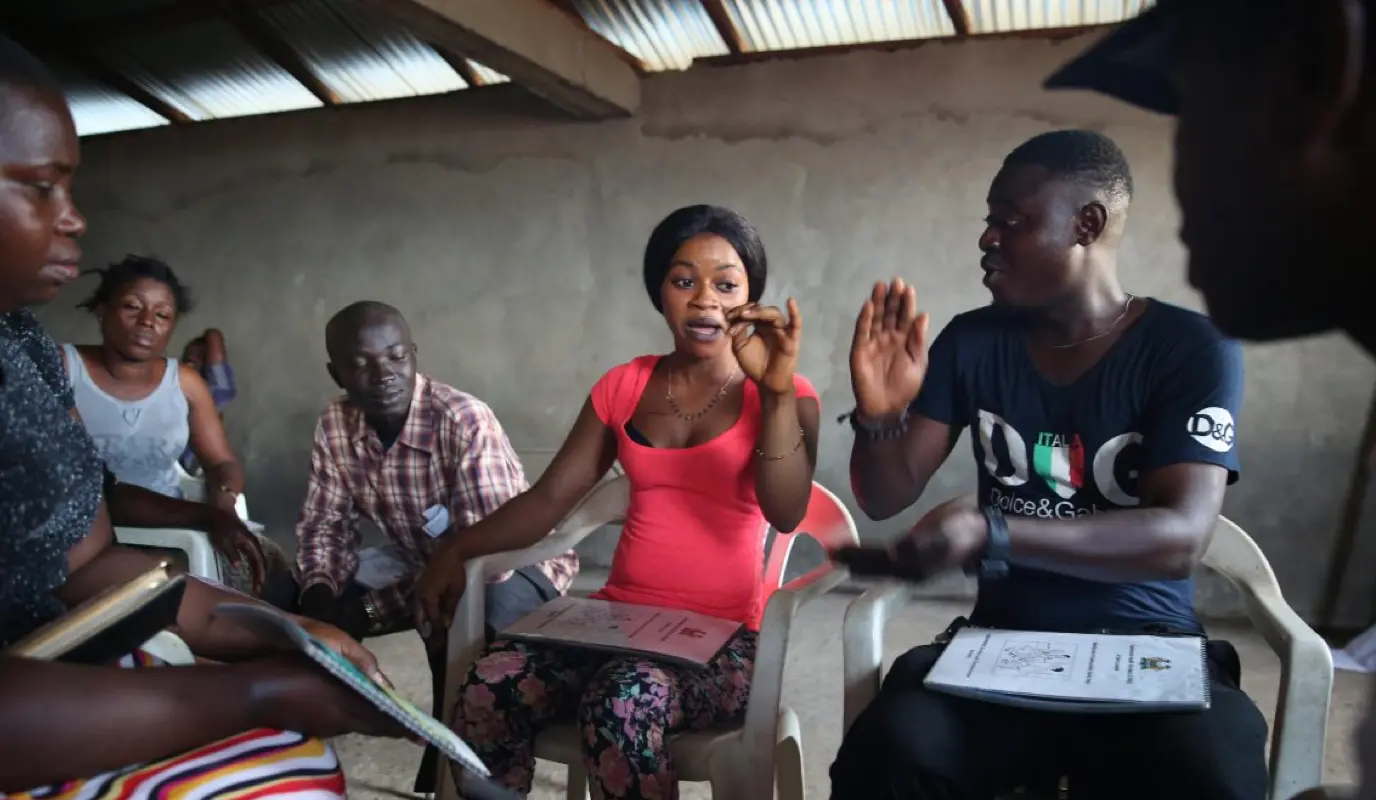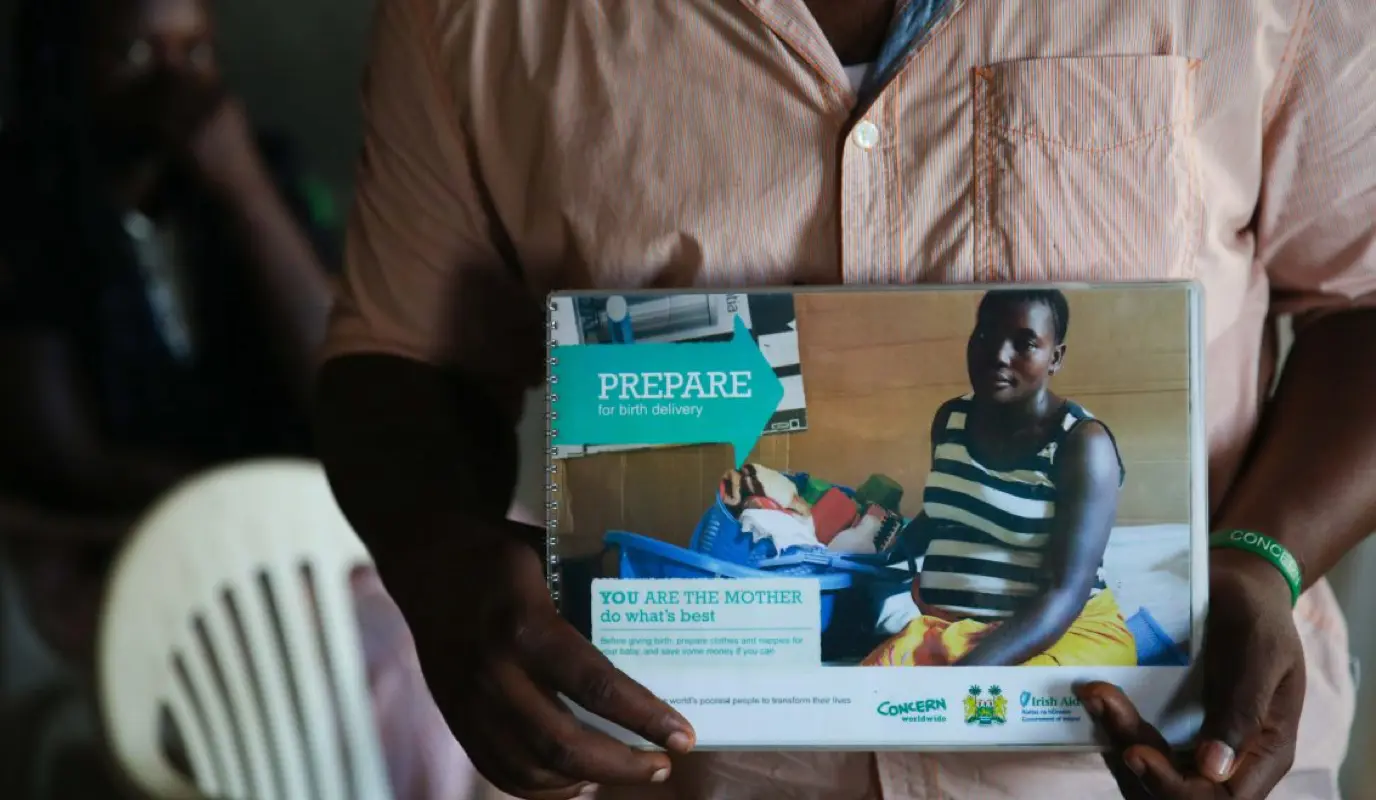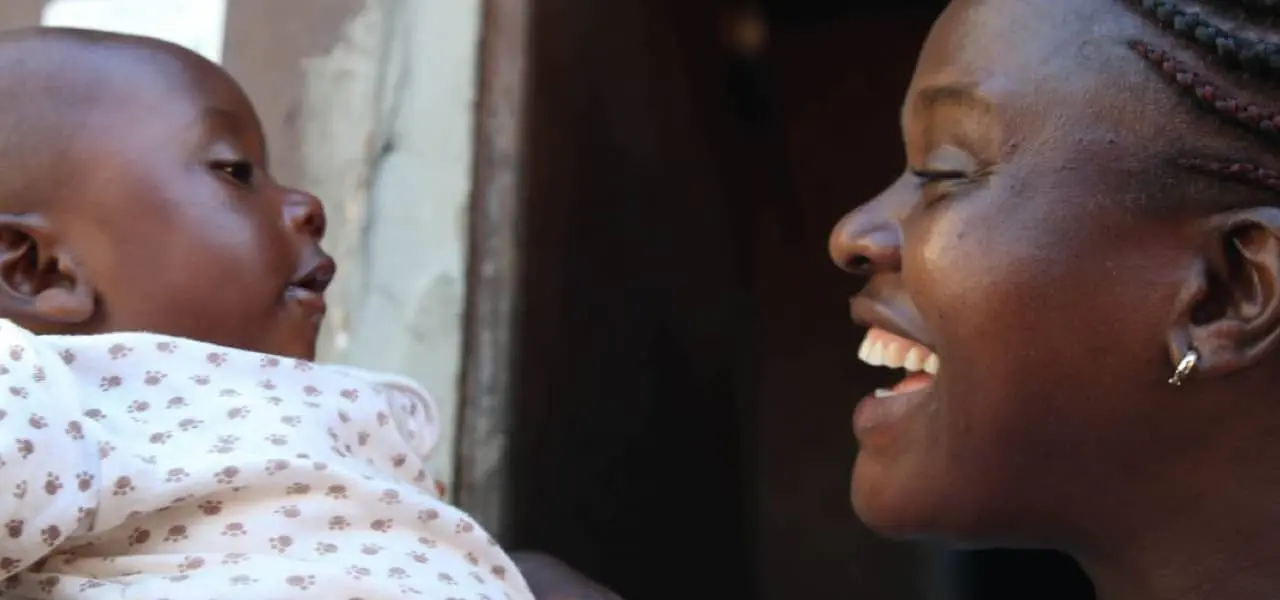PLEASE NOTE: THIS A LEGACY PROGRAM AND NO LONGER ACTIVE
The Challenge
By 2010, the number of children who died before their fifth birthday had declined by nearly half compared to 1990 (12 million to 7.6 million). However, this decline was not consistent in every country, with Sierra Leone topping the list of highest child mortality rates. In 2010, 160 out of every 1,000 children born didn’t reach the age of 5 (more than three times the global average). The numbers were equally distressing for infants: One in ten wouldn’t make it to their first birthday.
Moreover, many of these deaths were not inevitable and were caused by preventable, treatable illnesses such as malaria, pneumonia, diarrhea, and malnutrition.
Al Pikin Fo Liv: How We Started
Concern launched Al Pikin fo Liv (“Every Child Must Live”) in ten of the informal settlements of Freetown, the capital of Sierra Leone in 2011, as part of our larger work with USAID and Child Survival. Al Pikin fo Liv was developed to reduce maternal, infant, and child morbidity and mortality rates by:
- Improving knowledge of health and healthy habits in families
- Strengthening the quality of care offered at healthcare facilities
- Building the capacity to plan, implement, and monitor health initiatives at the community level
- Contributing to improvements in health policy at the national level
While many of the goals were the same, the nature of the project changed drastically with the 2014-16 Ebola virus epidemic. The highly contagious nature of Ebola could have derailed progress to improving the health of new mothers and their infants.
But that’s not how Concern works.
Freetown in Focus
Over a decade of civil war in Sierra Leone had forced many rural residents into the city, and the unplanned urbanization of the capital led to overcrowding, low-quality housing, and limited access to clean water and safe sanitation. The ten communities where we worked with Al Pikin fo Liv were also at risk for flooding and mudslide damage during the rainy season.
The setting of Freetown’s densely-populated and most vulnerable neighborhoods also made this approach unique. While the same health issues persist in rural areas, addressing those issues came with different challenges in a major city, including:
- Lower likelihood that community health workers (CHWs) would be known by their neighbors
- Busier lifestyles and higher mobility of residents
- Greater healthcare options in the city
In response to this, we adapted the role of community health workers in Freetown, providing additional communications training and adjusting the materials that communicated healthy behavioral changes. Concern recruited and trained 1,306 CHWs who, between 2014 and 2017, performed over 226,000 home visits and provided over 54,000 referrals. The total monthly visits nearly doubled over time.

Given the setting, Concern introduced community-based supervision and coordination that fostered greater collaboration between Freetown’s Ward Development and Health Management Committees (WDC and HMCs). This strengthened the bridges between the health system and community, enhancing accountability at the community level. We also worked with WDCs and HMCs so that they could take greater ownership of the health activities in their areas, and begin to collect and analyze community health data to make better informed decisions.
Responding to the Unexpected
Al Pikin fo Liv began in 2011. By 2012, a cholera outbreak in Sierra Leone had become the country’s largest since first reported in 1970, and its deadliest since 1994-95. Two years later, in 2014, Sierra Leone was one of the centers for the world’s largest Ebola epidemic. The highly contagious nature of both cholera and Ebola made frontline healthcare workers especially vulnerable.
During the Ebola outbreak in Sierra Leone, home visits from CHWs and other outreach activities were partially suspended as part of the country’s social distancing and no contact policies, despite many of the participants in Al Pikin fo Liv being at high risk for contagion and most vulnerable to the impacts of the virus. During this time, we shifted focus to promoting prevention control and the surveillance and referral of suspected cases to local health units.
The 2014-16 Ebola epidemic became a test for how the community health worker approach could sustain itself in urban environments, based on the challenges we noted above. The CHWs who worked in Freetown during the epidemic, however, became key to strengthening trust between the community and healthcare facilities, especially with rampant misinformation circulating. CHWs formed the backbone of the community referral network, and in turn they were anchored and supported by a structured community network of larger organizations.

A Strong Support System
While only 30% of our CHWs had been fully trained by the time Ebola hit Freetown, the network of healthcare workers rose to the occasion during the Ebola epidemic. As one WDC member from the neighborhood of Kanego put it:
“Everyone was confused and worried [during the epidemic], because there was no understanding. No one could tell them the right thing to do. Concern gave us support to send people out to tell the community that Ebola is real. People believed the WDC, because we were always around them and we listened to them. People believe us more. We made house-to- house visits. If we hadn’t done that, almost everyone would be dead in Kanego.”
CHWs played a vital role in this. Dr. Joseph Ngagba Kandeh, director of Sierra Leone’s Ministry of Health and Sanitation, told an independent evaluator that the CHWs were “very helpful during the Ebola period. They were involved in all areas except case management. In fact, some of our health workers were saved because of the CHW. If a community member wanted to go to the health center, the CHW alerted the health worker of that possible case, so they could protect themselves. This did save some health worker lives.”
Dr. Thomas Samba, DMO director for the Western Urban Area of Sierra Leone, added:
“Concern helped to introduce hand washing. CHWs went door-to-door speaking with people to encourage suspected cases to be treated. Their visits changed the way that people think about going to the clinic, and especially after Ebola, there was a need for trust to be rebuilt.”
After the training when we began to work, I had the zest to go house to house to do the work. Whenever I went out, I was happy to wear the [CHW] t-shirt. People praised me and that prompted me to do more work. We are doing the work out of love.
Moving Forward
In mid-2015, with case numbers in Freetown sinking, Al Pikin fo Liv was able to resume normal activities. Concern also received a nine-month, no-cost extension to the project to accommodate the unexpected detour.
Meanwhile, women and children in Freetown’s most vulnerable neighborhoods also enjoyed the benefits of the strengthened community healthcare system and network. In the three years that CHWs actively made house calls and led community activities and awareness campaigns, they contributed to the lowering morbidity and mortality rates of over 36,000 women and 35,000 children under 5 across 10 communities in Freetown.
This success was also reflected in overall trends: By the end of 2017, countrywide mortality rates for Sierra Leonean children under 5 had dropped from 16% to under 12%. The country is no longer the highest for mortality rates, and its numbers continue to drop year over year. Meanwhile, communities in Freetown took over the management of Al Pikin fo Liv following the end of our project in 2017.

Your Support
Your tax-deductible gift makes you part of a vital community that enables us to reach nearly 10 million people each year with lifesaving health and nutrition solutions.

